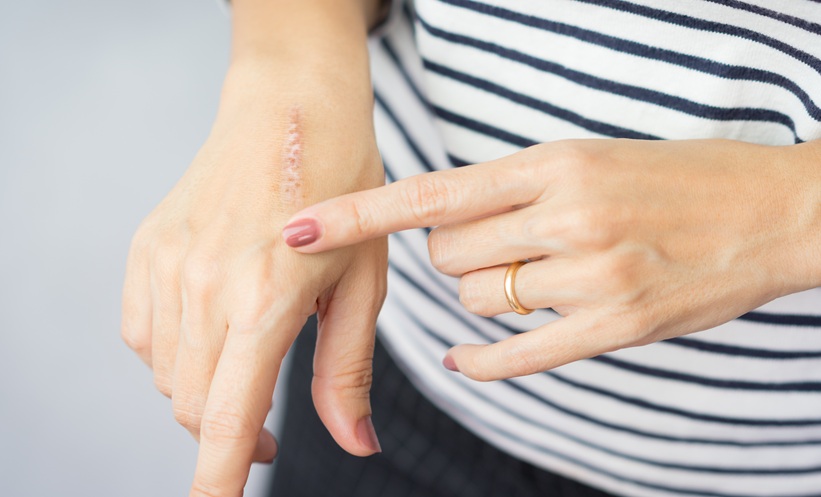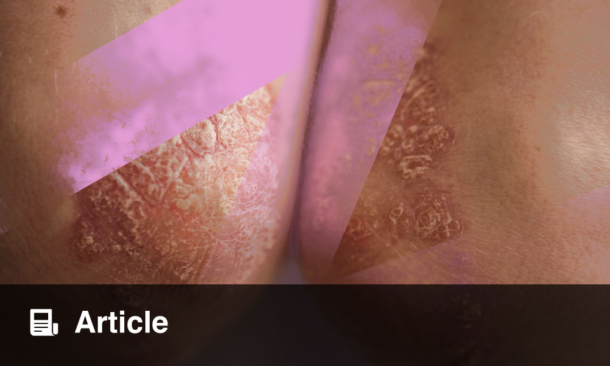Authors: Joseph McGrath,1,2 Evelyn F. Fagan,1,3 Milaan Shah,4 *Divya Sharma1
1. Department of Dermatology, University of Nebraska Medical Center, Omaha, USA
2. University of Minnesota Medical School, Minneapolis, USA
3. School of Medicine, Mercer University, Savannah, Georgia, USA
4. Department of Dermatology and Dermatologic Surgery, Medical University of South Carolina, Charleston, USA
*Correspondence to [email protected]
Disclosure: The authors have declared no conflicts of interest.
Keywords: American Academy of Dermatology (AAD) Annual Meeting, atopic dermatitis (AD) treatments, bimekizumab, circulating tumor DNA (ctDNA), dermatophytes, Merkel cell carcinoma, monkeypox (Mpox), spacial proteomics.
Acknowledgements: McGrath and Fagan contributed equally to this work.
Citation: Dermatol AMJ. 2025;2[1]:12-15. https://doi.org/10.33590/dermatolamj/SZST7937
![]()
INTRODUCTION
At the 2025 American Academy of Dermatology (AAD) Annual Meeting, Adela Rambi Cardones and Kevin Wang led a session highlighting top basic science and clinical dermatology literature. Topics included Merkel cell carcinoma surveillance, monkeypox, Trichophyton mentagrophytes genotype VII, bimekizumab for hidradenitis suppurativa (HS), spatial proteomics for drug target discovery, and atopic dermatitis (AD).1
MERKEL CELL CARCINOMA
Circulating tumor DNA (ctDNA), consisting of fragments of mutated DNA from broken-down tumor cells, can be detected in the blood and serves as a biomarker for Merkel cell carcinoma recurrence. A study involving 319 patients found that ctDNA levels in the blood were both sensitive (>93%) and specific (>85%) in detecting clinically evident disease, which was defined as evidence of Merkel cell carcinoma on imaging or physical exam. Patients with higher ctDNA levels at any time during tumor surveillance (median follow-up time of 267 days) had a significantly increased risk of recurrence even after controlling for other factors, such as stage and immunosuppression. Higher ctDNA levels also correlated with increased tumor size.2 The study’s findings suggest ctDNA testing can be used to assist in detecting Merkel cell carcinoma recurrence, though additional studies are needed to determine if the test can improve disease-specific survival.
MONKEYPOX
A global outbreak of Clade II monkeypox (Mpox) occurred in 2022, while an outbreak of Clade I Mpox has been ongoing in the Democratic Republic of the Congo since 2023. Clade I Mpox is associated with a higher fatality rate. The first case of Clade I Mpox in North America was observed in a US citizen that had recently traveled to East Africa. Upon returning home, he developed unilateral inguinal lymphadenopathy, fever, headache, and pustular lesions on his trunk and extremities. Of note, the patient reported no sexual activity during his travel. His overall disease course was mild, and JYNNEOS (Bavarian Nordic, Copenhagen, Denmark) post-exposure prophylaxis was administered to his housemate and travel companions.3 When the characteristic rash is present, physicians should consider the possibility of Clade I Mpox in those returning from endemic African regions, even without a stated history of sexual activity. They should also recognize that Clade I MPox can have a more severe disease course, though this was not observed in this particular case.
TRICHOPHYTON MENTAGROPHYTES GENOTYPE VII
A newly emerging dermatophyte, Trichophyton mentagrophytes genotype VII, has been identified, primarily affecting immunocompetent men who have sex with men in New York City. It presents as annular, scaly plaques on the face, trunk, groin, and genitals, sometimes accompanied by pustules and nodules. Diagnosis requires culture and sequencing for proper identification. Unlike many other tinea infections, oral antifungals are typically needed for treatment (e.g. terbinafine 250 mg daily for 3 months). Another emerging dermatophyte stemming from South Asia is Trichophyton indotineae. This dermatophyte is often resistant to standard clinical doses of terbinafine and may require higher doses or treatment with another antifungal, such as griseofulvin. The AAD has provided guidance on sending samples for further testing.4
HIDRADENITIS SUPPURATIVA
The current US FDA approved biologic treatments for HS include adalimumab, secukimumab, and bimekizumab. The IL-17 pathway plays a role in both the acute and chronic phases of HS, and targeting both phases is important for disease resolution. Bimekizumab is the newest FDA-approved biologic on the market for HS, with the unique ability to bind to all IL-17 homo- and heterodimers, specifically IL-17A and IL-17F. A 16-week study examining the efficacy of bimekizumab in moderate-to-severe HS demonstrated that roughly half of patients on therapy achieved at least a 50% reduction in the number of abscesses and inflammatory nodules compared to baseline, with these clinically meaningful responses being rapid and sustained.5 There are no head-to-head studies available to evaluate the efficacy of bimekizumab compared to the other approved HS biologics. Additional studies are needed to identify new targets for HS therapeutics, as not all patients have an adequate response to TNF-α or IL-17 inhibitors.
BASIC SCIENCE: SPATIAL PROTEOMICS
Spatial proteomics uses AI-driven tools to map protein expression within tissues, helping identify new drug targets and advance precision medicine. The process involves using immunohistochemistry to stain tissues for all available protein markers, followed by computational separation of cells based on their protein profiles with the assistance of mass spectrometry. By understanding which cell types express which proteins, scientists can gain a better understanding of the disease pathophysiology at a molecular level.6
The utility of spatial proteomics in dermatology is already being seen in toxic epidermal necrolysis (TEN), a severe drug-induced T cell-mediated hyperinflammatory condition. To date, there is a paucity of large-scale trials evaluating the efficacy of commonly used TEN treatments, in large part due to the condition’s rarity and rapid progression. To develop a more targeted therapy approach, researchers used spatial proteomics to determine the protein expression within tissue affected by TEN. They found that levels of phosphorylated STAT1 and IFN I and II were significantly elevated. Since JAK inhibitors are known to reduce interferon signaling through the JAK/STAT pathway, researchers decided to utilize this drug as a new therapy for TEN. A recent study examining the efficacy of acute dosing of abrocitinib (200 mg followed by 100 mg) for TEN displayed promising results, with all seven patients treated experiencing at least 95% re-epithelialization.6 However, more research is needed to determine whether JAK inhibitors are efficacious across various TEN molecular profiles, and head-to-head trials will be needed to determine if they can reduce mortality relative to more longstanding therapies.
ATOPIC DERMATITIS
Management of AD continues to evolve, with topical JAK inhibitors emerging as a potential treatment; however, misinformation from non-dermatology specialties has led to confusion in treatment recommendations.7 There are concerns regarding the frequency of topical steroid use, with allergists and immunologists recommending once-daily application, while dermatologists recommend twice-daily use. Additionally, bleach baths are beneficial for all cases of atopic dermatitis and should not be restricted to only severe cases, despite incorrect guidance from non-dermatology specialists. Allergists and immunologists have also advised against the use of systemic treatments such as methotrexate, cyclosporine, and mycophenolate mofetil, despite lacking the evidence or expertise to make these recommendations. Dermatologists must reclaim primary decision making for their diseases, ensuring that treatment decisions are guided by dermatology expertise. The AAD guidelines for AD have not been updated since 2014, highlighting the need for dermatologists to summarize current evidence-based recommendations and make them readily accessible on the AAD website.







